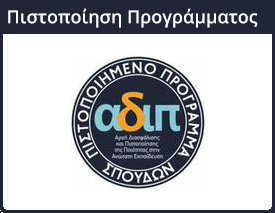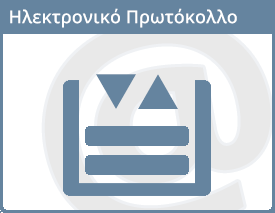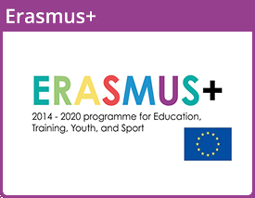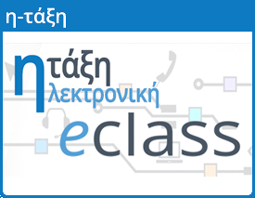Υ1205 - ΟΡΥΚΤΟΛΟΓΙΑ - ΚΡΥΣΤΑΛΛΟΓΡΑΦΙΑ
Περιεχόμενο Μαθήματος
Τα ορυκτά είναι τα κύρια συστατικά των γήινων υλικών και βασικά συστατικά του Ηλιακού Συστήματος και του Σύμπαντος. Παράγονται επίσης από ζωντανούς οργανισμούς για να σχηματίσουν μια ποικιλία βιοορυκτών. Η θεμελιώδης κατανόηση της δομής και της σύνθεσής τους είναι ζωτικής σημασίας για όλα τα πεδία στις Επιστήμες της Γης και του Περιβάλλοντος. Το μάθημα αυτό στοχεύει στην παροχή γνώσεων για τη σύγχρονη Ορυκτολογία-Κρυσταλλογραφία που απαιτούνται κυρίως στη Γεωλογία, και ιδιαίτερα στη Πετρολογία/Γεωχημεία/Μεταλλεύματος & Οικονομική Γεωλογία. Επιπλέον, να εισαγάγει τους φοιτητές σε μακροσκοπικές, μικροσκοπικές, αναλυτικές, θερμικές και ακτίνες Χ τεχνικές που εφαρμόζονται στην έρευνα ορυκτών.
Εισαγωγή στην Ορυκτολογία. Ιστορική αναδρομή. Αρχές Κρυσταλλογραφίας και Κρυσταλλοχημείας. Κρυσταλλικά και άμορφα στερεά υλικά. Μοναδιαία κυψελίδα και κρυσταλλικό πλέγμα. Γεωμετρική Κρυσταλλογραφία (συμμετρία, κρυσταλλικά συστήματα, δείκτες, κρυσταλλογραφικά σύμβολα, εναντιομορφισμός, στερεογραφική προβολή). Ημικρύσταλλοι και σχετικά ορυκτά. Συμφύσεις και διδυμίες-πολυδυμίες. Πυρήνωση και ανάπτυξη κρυστάλλων και ορυκτών (κρυστάλλωση). Κρυστάλλωση ορυκτών απο ψύξη τήγματος/μάγμα & υδροθερμικά ρευστά (πυριγενή ορυκτά), επίδραση της πίεσης (μεταμορφικά ορυκτά & ορυκτά βάθους), δημιουργία απο διαλύματα και βιο-διεργασίες (βιο-ορυκτά). Επίταξη, τοπόταξη, απόμειξη, διαγράμματα φάσεων. Εισαγωγή στις μικροσκοπικές τεχνικές (οπτική μικροσκοπία, SEM, TEM, AFM). Βασικές αρχές ενόργανης χημικής ανάλυσης ορυκτών και γεωλογικών υλικών (με ακτίνες-X, e-, p+, Laser, MS, δέσμες ιόντων). Οπτική Κρυσταλλογραφία-Ορυκτολογία, πολωτικό μικροσκόπιο, οπτικές ιδιότητες ορυκτών (οπτικοί άξονες, ισοτροπία/ανισοτροπία, μονάξονες/διάξονες κρύσταλλοι, ελλειψοειδή, κατάσβεση, πλεοχρωϊσμός, κωνοσκοπική εξέταση). Εισαγωγή στη δομική Κρυσταλλογραφία - Ορυκτολογία (κρυσταλλική δομή, ατέλειες-χρώμα ορυκτών & γεωϋλικών, στερεά διαλύματα, ισομορφισμός, πολυμορφισμός, αλλοτροπία, πολυτυπισμός). Ακτίνες-Χ και μελέτη υλικών και ορυκτών με περίθλαση ακτίνων-Χ (XRD) σκόνης (νόμος Bragg, διαγράμματα ακτίνων-Χ, σταθερές μοναδιαίας κυψελίδας). XRD με ακτινοβολία Σύγχροτρον και φορητά όργανα. Θερμική συμπεριφορά ορυκτών και θερμικές αναλύσεις (TGA, DTA, DSC). Λογισμικό για γεωμετρική Κρυσταλλογραφία - Ορυκτολογία (WinXMorph; JCrystal & KrystalShaper; Kristall2000). Λογισμικό για δομική Κρυσταλλογραφία - Ορυκτολογία (VESTA). Λογισμικό για περίθλαση ακτίνων-Χ (XRD) σκόνης (PowDLL; QualX2).






